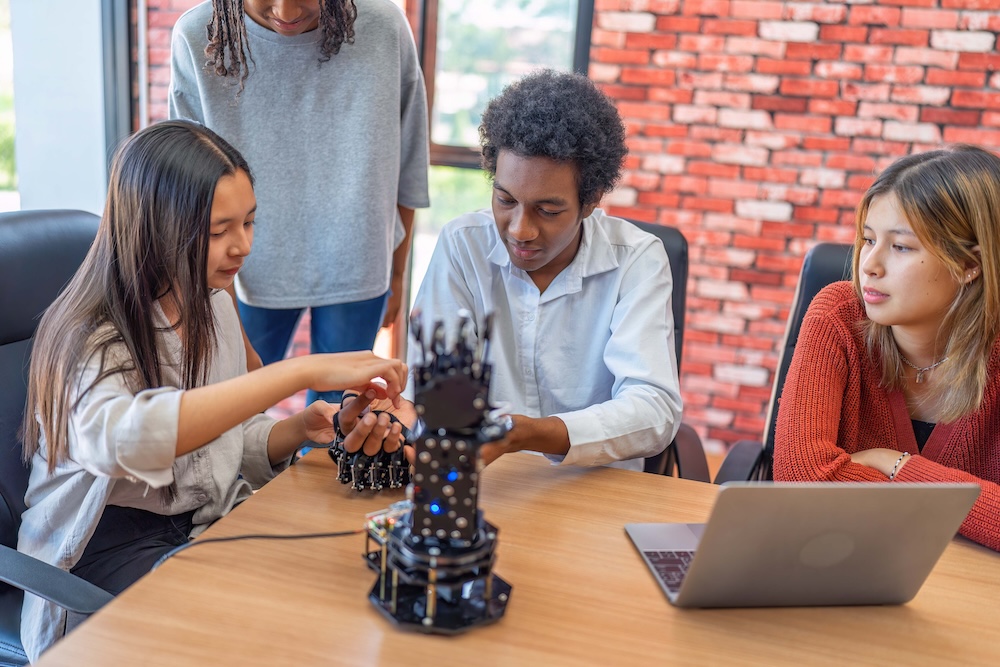As robotics and artificial intelligence advance, there is growing interest in making machines more intuitive, natural, and accessible for humans to interact with. By integrating AI language models like ChatGPT into robots, we can unlock new applications across industries while also supporting sustainability goals. Smarter, more adaptive robots can reduce waste, optimize resources, and enable solutions that are not only efficient but also environmentally responsible.
How ChatGPT Can Be Integrated into Robots
Acquiring and Preprocessing Data
Training AI models like ChatGPT requires large volumes of text data, which are collected from books, articles, and online sources. The data is then cleaned, formatted, and prepared for training. This preprocessing step ensures the model learns effectively and avoids “noise” that could reduce accuracy.
Training the ChatGPT Model
Using deep learning frameworks such as TensorFlow or PyTorch, the AI model is trained to generate human-like responses. This stage can take days or weeks depending on complexity, but it lays the foundation for natural language interaction.
Integration with Robots
Once trained, ChatGPT is embedded into robotic systems through a software interface. Key features often include:
- Voice recognition: allows the robot to interpret spoken language.
- Text-to-speech systems: enable natural-sounding verbal responses.
- Context adaptation: ensures robots can respond intelligently across different use cases, from healthcare to logistics.
Testing and Refinement
Robots equipped with ChatGPT are tested in real-world scenarios — such as hospitals, warehouses, or customer service environments — to refine accuracy and adaptability. This iterative process ensures reliable performance before widespread deployment.
Who Benefits from ChatGPT-Powered Robots
- Consumers: Easier-to-use robots that adapt to natural language reduce barriers to adoption and promote accessibility.
- Businesses: Companies gain productivity, better customer service, and new opportunities for personalization.
- Industries: Healthcare, manufacturing, logistics, and retail can automate tasks more efficiently and reduce reliance on manual, resource-intensive processes.
- Developers: Greater ability to build innovative, sustainable solutions with fewer technical barriers.
- Society: Natural language robots improve accessibility for people with disabilities, broaden educational opportunities, and enable better public services.
Sustainability Benefits of AI-Integrated Robots
While efficiency is a common benefit highlighted in robotics, sustainability is equally important. ChatGPT-powered robots can directly support environmental and social responsibility by:
- Reducing Waste in Supply Chains: Smarter robots in logistics and manufacturing can minimize material waste, optimize packaging, and streamline operations to reduce unnecessary resource use.
- Supporting a Circular Economy: Robots in retail or consumer-facing environments can help customers navigate refill systems, promote zero waste containers, and educate on sustainable choices.
- Energy Efficiency: Adaptive AI can optimize energy use in factories, hospitals, and offices by better aligning machine activity with real-time demand.
- Sustainable Agriculture: Robots equipped with AI language models can provide farmers with guidance on soil health, irrigation, and crop rotation — making regenerative farming more accessible.
- Education and Awareness: AI-powered robots in classrooms, community centers, or stores can serve as sustainability ambassadors, teaching practical steps to reduce waste and live responsibly.
Final Thoughts
Integrating ChatGPT into robots isn’t just about making machines talk like humans. It’s about creating systems that help us live more responsibly and sustainably. Smarter robots can reduce waste, optimize resources, and help individuals and businesses embrace greener practices. Whether assisting patients in healthcare, streamlining supply chains, or guiding customers toward zero waste choices, AI-powered robotics can be a critical tool in building a sustainable future.
If we prioritize responsibility alongside innovation, ChatGPT-driven robots won’t just change how we interact with machines — they’ll change how we care for the planet.









Reader Interactions